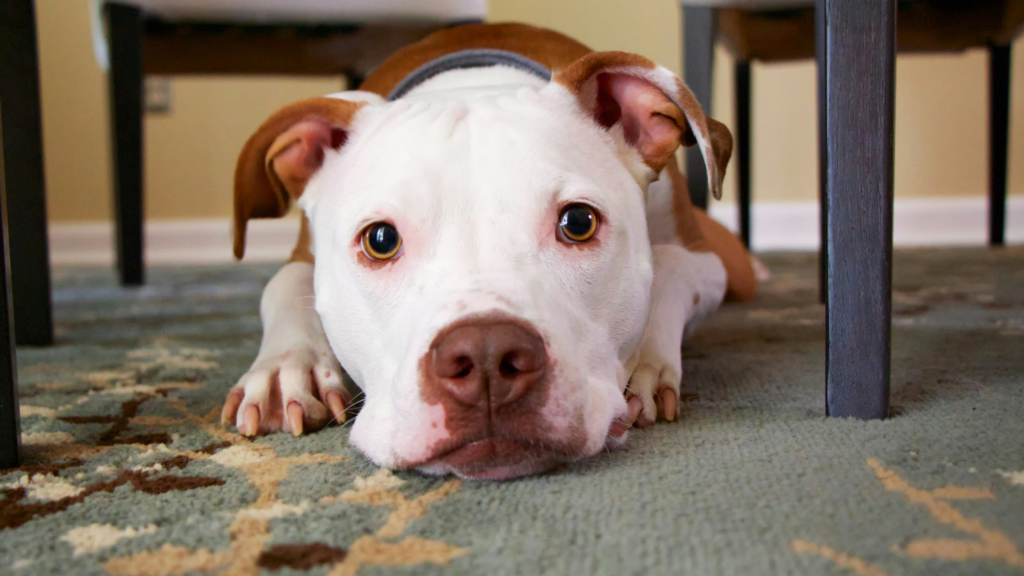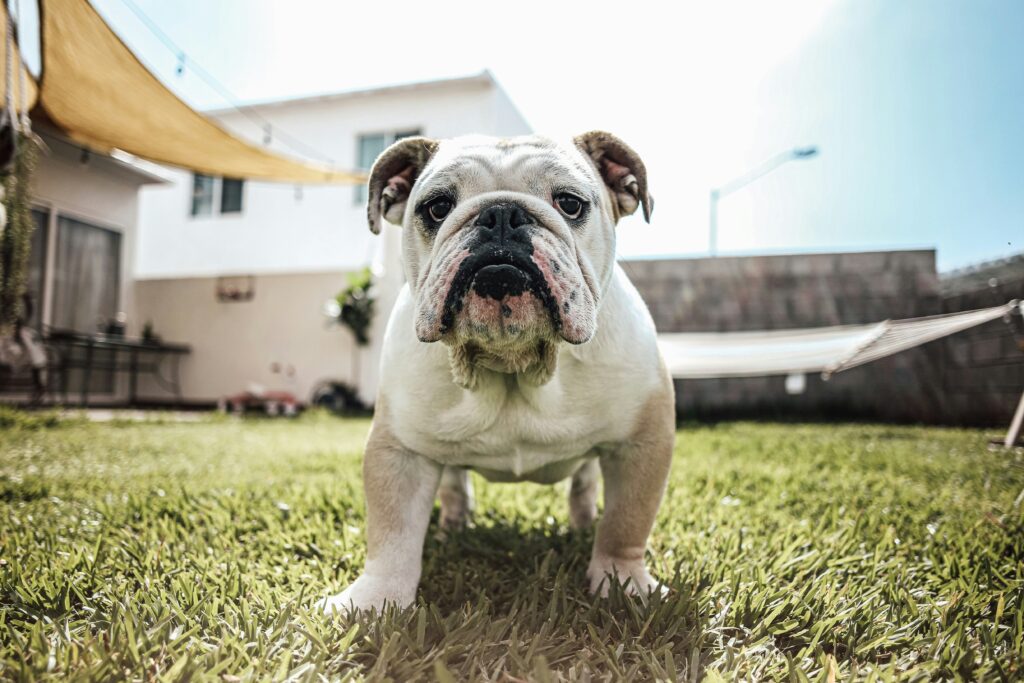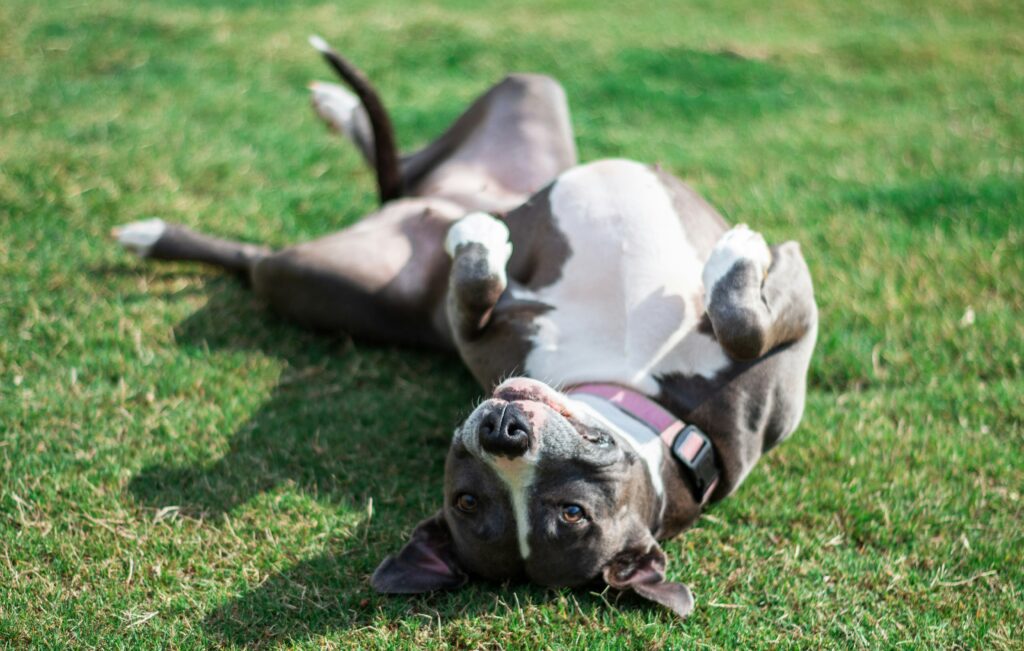| Summary: Pitbulls typically weigh 30-65 pounds and stand 18-21 inches tall, while Bulldogs weigh 40-50 pounds and stand 12-16 inches tall. Pitbulls are more energetic, requiring 60-90 minutes of exercise, while Bulldogs need around 30-60 minutes. Bulldogs have a shorter lifespan of 8-12 years, compared to Pitbulls’ 12-16 years. |
When discussing dog breeds that are both popular and misunderstood, the pitbull vs bulldog stand out. These two breeds are often associated with toughness and strength, but each brings a unique set of characteristics, making them distinct in terms of temperament, physical traits, and suitability as pets.
While they share some commonalities, such as their stocky build and loyalty, there are also key differences that pet owners should consider when choosing between the two. As a pet lover and owner of 3 dogs, I will explore the differences and similarities between Pitbulls and Bulldogs, shedding light on their origins, behavior, health, and overall suitability for families.
Learn more about the unique double-layered coat of an Anatolian Shepherd and how to care for it effectively.
Blog Highlights
ToggleComparison Table: Pitbull vs Bulldog
| Feature | Pitbull | Bulldog |
| Weight | 30-65 lbs | 40-50 lbs |
| Height | 18-21 inches | 12-16 inches |
| Exercise Needs | 60-90 minutes | 30-60 minutes |
| Lifespan | 12-16 years | 8-12 years |
| Temperament | Energetic, loyal | Calm, affectionate |
Origins and History of the Pitbull Vs Bulldog
The origins of both the Pitbull and Bulldog trace back to the working dogs of Europe, though they were developed for different purposes. The Pitbull’s history is somewhat complex due to the variety of breeds it encompasses. The term “Pitbull” generally refers to the American Pit Bull Terrier, but it is sometimes used to describe other similar breeds, such as the American Staffordshire Terrier and the Staffordshire Bull Terrier.
These dogs were originally bred in England for bull-baiting—a cruel and dangerous blood sport. The goal of breeding these dogs was to produce a strong, agile animal that could withstand a tremendous amount of stress and still remain focused on its task.
For insights on whether Pomeranians should wear a collar, including considerations for safety and alternatives, check out this informative article.
After bull-baiting was outlawed in the 19th century, Pitbulls were repurposed as farm dogs, and their loyalty and intelligence led them to become beloved family companions in America.
The Bulldog, on the other hand, has a more straightforward history. Bulldogs, particularly the English Bulldog, were originally bred for bull-baiting as well. The breed was developed to be a sturdy, muscular dog capable of grabbing and holding onto a bull’s nose, using its immense jaw strength.

Over time, as bull-baiting was outlawed, Bulldogs’ temperament was modified to make them more suitable as family pets. Today, Bulldogs are primarily known for their calm demeanor, loyalty, and unique appearance, which has helped them become a popular companion animal worldwide.
Both breeds have histories rooted in strength and determination, though their paths diverged after bull-baiting was outlawed. The Pitbull became known for its agility, work ethic, and versatility, while the Bulldog’s personality softened to make it a more relaxed and easygoing pet.
Physical Characteristics: Pitbull vs Bulldog
One of the most noticeable differences between the Pitbull and Bulldog is their physical appearance. Pitbulls tend to have a lean, athletic build with a well-defined musculature. Their bodies are designed for agility and stamina, which makes them excellent working dogs, especially in tasks that require endurance and strength.
Typically, Pitbulls stand between 18-21 inches tall and weigh between 30-65 pounds, with males generally being larger than females. Their coat is short and smooth, and they come in a variety of colors, including brindle, blue, black, and fawn.

Bulldogs, in contrast, have a more compact, stocky, and muscular build. They possess a unique appearance with a broad, wrinkled face, a short muzzle, and a large head. Bulldogs are much shorter than Pitbulls, usually standing between 12-16 inches at the shoulder and weighing around 40-50 pounds.
Their short, smooth coat comes in a variety of colors, most commonly brindle, white, or a combination of both. Bulldogs have a distinctive underbite, contributing to their characteristic “sour” expression. Their short, thick necks and wide chests give them a very solid and sturdy appearance.
While both breeds are strong and muscular, Pitbulls are taller, leaner, and more athletic, whereas Bulldogs are shorter, stockier, and more prone to a laid-back lifestyle. The Bulldog’s unique appearance, especially its face, is one of the breed’s most defining features, while the Pitbull’s appearance reflects its energetic and athletic nature.
Temperament and Personality
When it comes to temperament, there are notable distinctions between the Pitbull and the Bulldog. Pitbulls are generally known for being energetic, intelligent, and extremely loyal. They thrive on human interaction and are often very affectionate with their families. However, they also require consistent training and structure, as they have a strong drive and can become stubborn if not properly guided.
They are highly social dogs and enjoy being the center of attention, whether that means playing fetch, going for long walks, or simply cuddling with their owners. Though they were originally bred for bull-baiting, properly socialized Pitbulls are gentle and loving, especially toward their families. However, they do require early training and socialization to ensure they grow up to be well-behaved companions.
Bulldogs, by contrast, are generally more relaxed and laid-back. They have a calm demeanor, which makes them great companions for people looking for a dog that does not demand excessive exercise or attention.

Bulldogs tend to bond closely with their owners and are particularly affectionate toward children. They enjoy being around people but are typically less energetic than Pitbulls, which makes them a good choice for families or individuals who prefer a lower-energy pet.
Bulldogs are known for their stubbornness, but this trait is typically more about their preference for lounging around than about being difficult to train. Like Pitbulls, Bulldogs also benefit from early training and socialization, as this helps prevent undesirable behaviors like possessiveness or aggression.
Both breeds are known for their loyalty to their families, but the key difference is in energy levels. Pitbulls are much more active and require regular exercise to stay happy and healthy, while Bulldogs are content with a more sedentary lifestyle. The Pitbull’s enthusiasm for play and work can sometimes lead to overexertion, while Bulldogs are more than happy to lie on the couch with their owners for long periods.
Training and Socialization: Pitbull vs Bulldog
Both the Pitbull and Bulldog are highly trainable breeds, but they require different approaches to training due to their distinct personalities. Pitbulls are intelligent dogs and can excel in obedience training when they are provided with structure and consistency. However, their energetic nature means that training needs to be engaging, or else they may lose interest.
Positive reinforcement techniques, such as treats and praise, work well with Pitbulls. Because they are social animals, they generally do well in situations that require them to interact with people and other dogs. Pitbulls are often seen excelling in dog sports such as agility training, obedience competitions, and weight pulling, all of which help channel their energy in productive ways.

For a comprehensive guide on what kind of harness is best for a Pomeranian, including comfort and safety tips, check out this article.
Training a Bulldog, on the other hand, can be a bit of a different experience. Bulldogs are often described as being “stubborn,” and while they are affectionate and loving, they do not have the same drive to please their owners as a Pitbull does. Bulldogs are more likely to be motivated by food and comfort rather than praise or rewards.
They enjoy learning new commands but may be less enthusiastic than their Pitbull counterparts. Bulldogs respond well to positive reinforcement, but training sessions should be kept short and consistent, as Bulldogs are not as eager to work as some other breeds.
Socialization is key for both breeds, and while both dogs can do well with early exposure to other dogs, people, and environments, the approach to training should reflect the breed’s personality. Pitbulls benefit from rigorous socialization and early exposure to a variety of situations, while Bulldogs tend to be less demanding in this area.
Regardless of the breed, proper training and socialization are essential for preventing behavioral issues, ensuring that both dogs grow up to be well-adjusted companions.
Health and Lifespan
Like any breed, both the Pitbull and Bulldog have their own unique health considerations. Pitbulls are generally a healthy breed, with a lifespan ranging from 12 to 16 years. However, they are prone to certain genetic conditions, such as hip dysplasia, heart disease, and allergies.
Regular vet checkups, a balanced diet, and proper exercise are essential to keep a Pitbull in good health. Additionally, Pitbulls may be susceptible to some skin conditions, such as hot spots and rashes, especially if they are exposed to allergens or irritants.
Bulldogs, while also generally healthy, are more prone to specific health problems due to their unique physical traits. Bulldogs have a short muzzle, which makes them prone to brachycephalic syndrome, a condition that can cause breathing difficulties, especially in hot or humid weather. Their compact, stocky bodies also make them susceptible to joint problems, including hip and elbow dysplasia.

Additionally, Bulldogs are prone to obesity due to their slower metabolism and love of food, so careful attention must be given to their diet to avoid weight-related health issues. Bulldogs typically live between 8 to 12 years, though their lifespan can be shortened by severe health problems, especially those related to their respiratory system.
While both breeds can live long, healthy lives, the Bulldog’s unique physical features make it more susceptible to certain health conditions, which may require extra care and attention from their owners.
Exercise Needs: Pitbull vs Bulldog
When comparing the exercise requirements of the Pitbull vs Bulldog, it’s clear that these breeds have different needs when it comes to physical activity. The Pitbull is an energetic and highly athletic dog that thrives on regular exercise and mental stimulation.
Due to its history as a working and hunting dog, the Pitbull has a high stamina and requires at least 60-90 minutes of vigorous activity every day. This can include running, playing fetch, hiking, or engaging in interactive games that challenge both their body and mind. Without enough exercise, Pitbulls can become restless, bored, and potentially develop behavioral issues.
In contrast, the Bulldog has much lower energy levels and is not as demanding when it comes to exercise. Bulldogs are perfectly content with a daily walk and some light playtime. Typically, Bulldogs only need around 30 minutes to an hour of moderate exercise each day. They are more inclined to lounge around the house or nap, which makes them ideal companions for individuals who prefer a less active lifestyle.
Discover if the American Eskimo is a guard dog and learn about its suitability for protecting your home.
However, it is still important to provide Bulldogs with regular exercise to maintain their health and prevent obesity. Because Bulldogs are prone to breathing difficulties due to their flat faces, it’s important to be cautious when exercising them in hot or humid conditions. Short, gentle walks are often sufficient for keeping Bulldogs in good physical shape.
Overall, the Pitbull requires significantly more physical activity to burn off its energy, whereas Bulldogs are more sedentary and can thrive on less frequent and intense exercise sessions. Depending on your activity level, you should consider how much time you’re willing to dedicate to walking, playing, and engaging with your dog when choosing between these two breeds.
Which Breed is Right for You?
Choosing between a Pitbull vs Bulldog largely depends on your lifestyle and the type of companion you’re looking for. Pitbulls are great for active families or individuals who can provide them with plenty of exercise and mental stimulation.
Their energetic nature makes them ideal for people who enjoy outdoor activities, sports, or simply playing with a dog who has an abundance of enthusiasm. Pitbulls also make excellent working dogs, excelling in roles such as therapy, service, and detection.
Learn about the size collar for an American Eskimo to ensure a perfect fit and comfort for your dog.
Bulldogs, on the other hand, are better suited to individuals or families who prefer a more laid-back dog that doesn’t require as much exercise. Bulldogs are calm, affectionate, and patient, making them an excellent choice for people who live in apartments or homes with limited space. They are also well-suited for first-time dog owners due to their relatively low energy levels and easygoing temperament.
Ultimately, the choice between a Pitbull and a Bulldog comes down to your personal preferences, living situation, and ability to meet the dog’s exercise and training needs. Both breeds can make loving, loyal companions, but understanding their unique characteristics will help you choose the breed that best fits your lifestyle.





